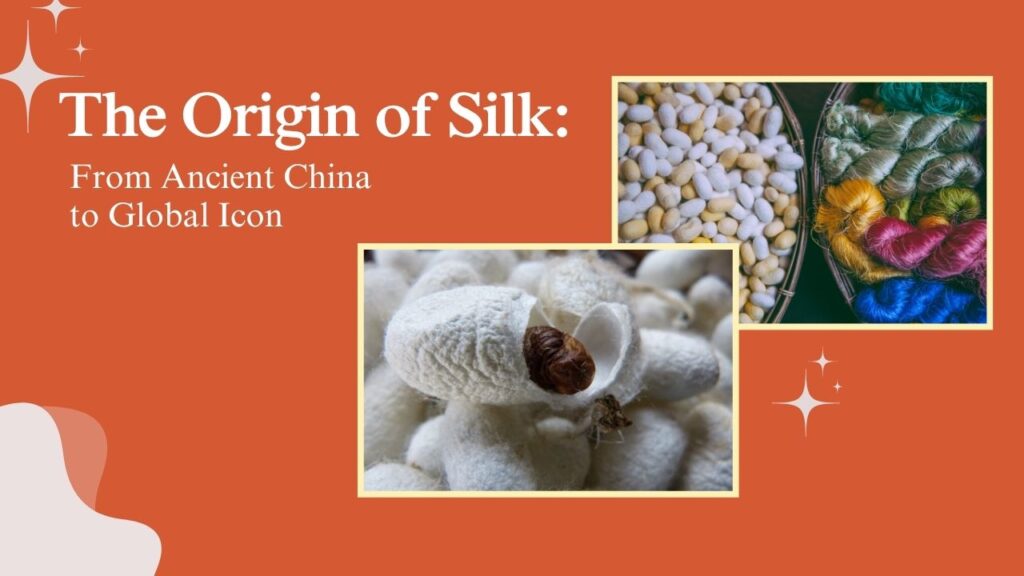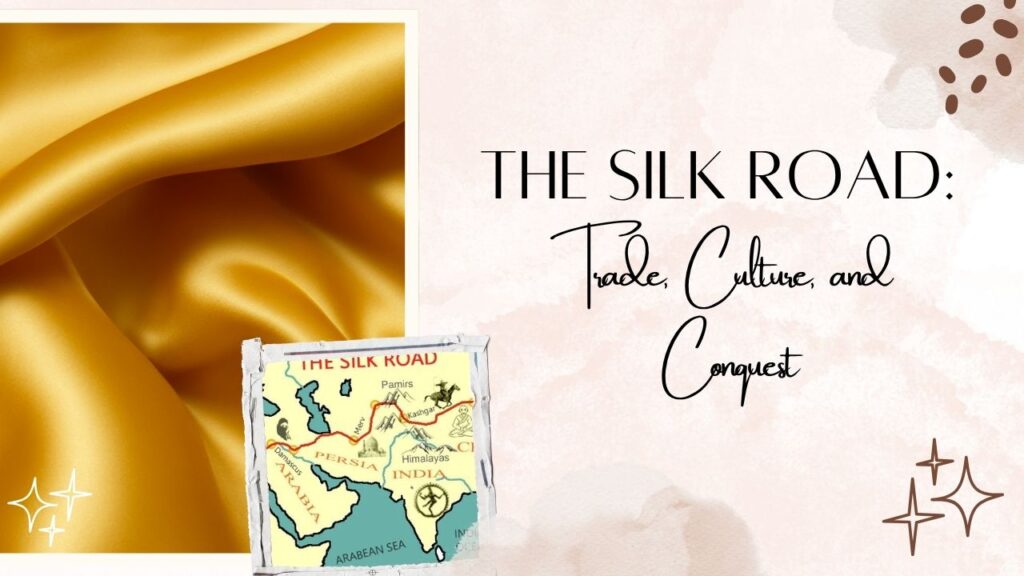Silk is not just a fabric. It’s a symbol of luxury. It is a thread of wonder that turned ordinary moments royal. People from long ago didn’t just cover themselves with silk. Wearing it was like wrapping oneself in a treasure from legends. Touch it, and you’ll feel why; it shimmers quietly, falls just right, and sits on your skin like a gentle breeze.
This cloth turned heads everywhere it went, and it was considered “special” long before luxury had a name. Let’s step into its story, why silk is the fabric of royalty, how it fascinated emperors, what makes it so hard to match, and why it still sets hearts racing when worn today. So, make sure you stay with us until the end. Let’s get started!
The Origins of Silk
Go back in time, and you’ll find silk’s first chapter written in ancient China. Imagine, for a moment, a quiet garden and an Empress called Leizu, who discovers a tiny cocoon slips into her tea and starts unwinding. Out comes a miraculous, shiny thread, a secret the Chinese turned into an art, protected fiercely for hundreds of years.
How Silk is Made:
- Silkworms, after munching on mulberry leaves, spin cocoons.
- Careful hands separate each delicate cocoon, pulling out a thin, endless thread.
- Several threads are twisted and woven together, turning a simple worm’s work into magical cloth.
The Silk Road and the Spread of Luxury
It wasn’t long before word about this glittering cloth slipped out beyond China’s walls. Silk started crossing deserts with brave traders, bundled on camels, hidden in chests, guarded like jewels. With every roll of silk, stories, cultures, and dreams traveled from Asia west to Rome, Venice, and beyond. Making silk also took so much time and skill that most folks could only dream of owning it. That’s part of what made it so prized. The story of its making was woven into every thread.
Silk in Royal Courts and Nobility
No crown, throne, or palace ever quite looked right without silk. In China, only the highest rulers could wear certain silk colors, and secret patterns marked their place above all others. Over in India and Persia, kings wore silk at weddings and big festivals. Rome was so obsessed with silk that, at times, only the Emperor could legally wear it!
You could see silk not just in clothes, but lining palaces, decorating horses, and in every great event. It was a shortcut to looking important. One silk robe said more than a chest full of jewels. This the reason why silk is the fabric of royalty.
The Qualities That Made Silk Royal
Now, let’s have a look at some excellent qualities that made silk ‘royal’:
- A Hidden Glow: It doesn’t just shine, it glows, hinting at magic beneath the surface.
- Unmatched Softness: Slide your hand along silk. It’s not just smooth, but almost calming.
- Quiet Strength: Silk can take a lot for something so thin, often outlasting other finer cloths.
- Rich Color: With silk, colors look extra deep and tasty, like a bowl of fresh fruit.
- Always Comfortable: Somehow cool in summer, warm in winter, perfect in any climate.
Cultural and Symbolic Importance
Even today, silk shows up for life’s big moments, such as weddings, festivals, and family gatherings. When it rustles softly, you know something memorable is happening. Silk isn’t just for show; it’s meant something in every place it’s gone. Let’s understand:
- In China, red silk brought luck at weddings, and only the right people could wear certain hues.
- In India, people offered silk as gifts to gods or kings at celebrations.
- European kings stored silk clothes for generations, sometimes as the most beloved family treasures.
Sustainable Royalty: Is Silk Still Relevant Today?
Fast forward. Lots of new clothes crowd the market, but when something really matters, people still reach for silk. Today’s world asks new questions, such as “Can we make silk gently?”, “Can we protect the workers and the earth?”
Some companies choose “Peace Silk,” giving silkworms a kinder life. Others are careful with who farms their silk, making sure families and nature are respected. Silk now shows up not only in traditions, but blended with tech or earth-friendly threads for modern style, never losing its royal touch.
In a Nutshell
Silk is more than what people wear. It’s a living piece of history. It’s tied together empires, sparked dreams of places far away, and always made the wearer stand out. Even now, one swipe of silk against your skin feels like a quiet secret shared with all those who loved it before, kings, queens, poets, and dreamers.
Even after being adored through all these years, silk manages to sustain its royal charm and its status in the world of different fabrics. It remains a classic and will always be.
FAQs: Why Silk is the Fabric of Royalty
1: Why is silk considered luxurious?
It shines, feels gentle, is hard to make, and lasts even when new clothes show up. Because silk is rare and beautiful, people always treat it as something precious.
2: Was silk really only worn by royalty?
In the beginning, yes. Kings, queens, and wealthy people wore it first, but later, more people got to enjoy it.
3: What cultures used silk in royal traditions?
China, India, Persia, Rome, and many other places loved silk for their proudest people and biggest celebrations.
4: How is silk made?
Silkworms make cocoons, workers pull the thread out carefully, spin it together, and weave it into soft cloth.
5: Is silk still considered royal today?
Yes, silk still marks the moment as special, such as weddings, fancy parties, and even family heirlooms. It never lost that spark.
6: Is silk production ethical?
Some silk today is made in careful ways, like “Peace Silk,” and many brands share how they care for workers, animals, and the earth. It’s smart to check before you buy if that matters to you.



